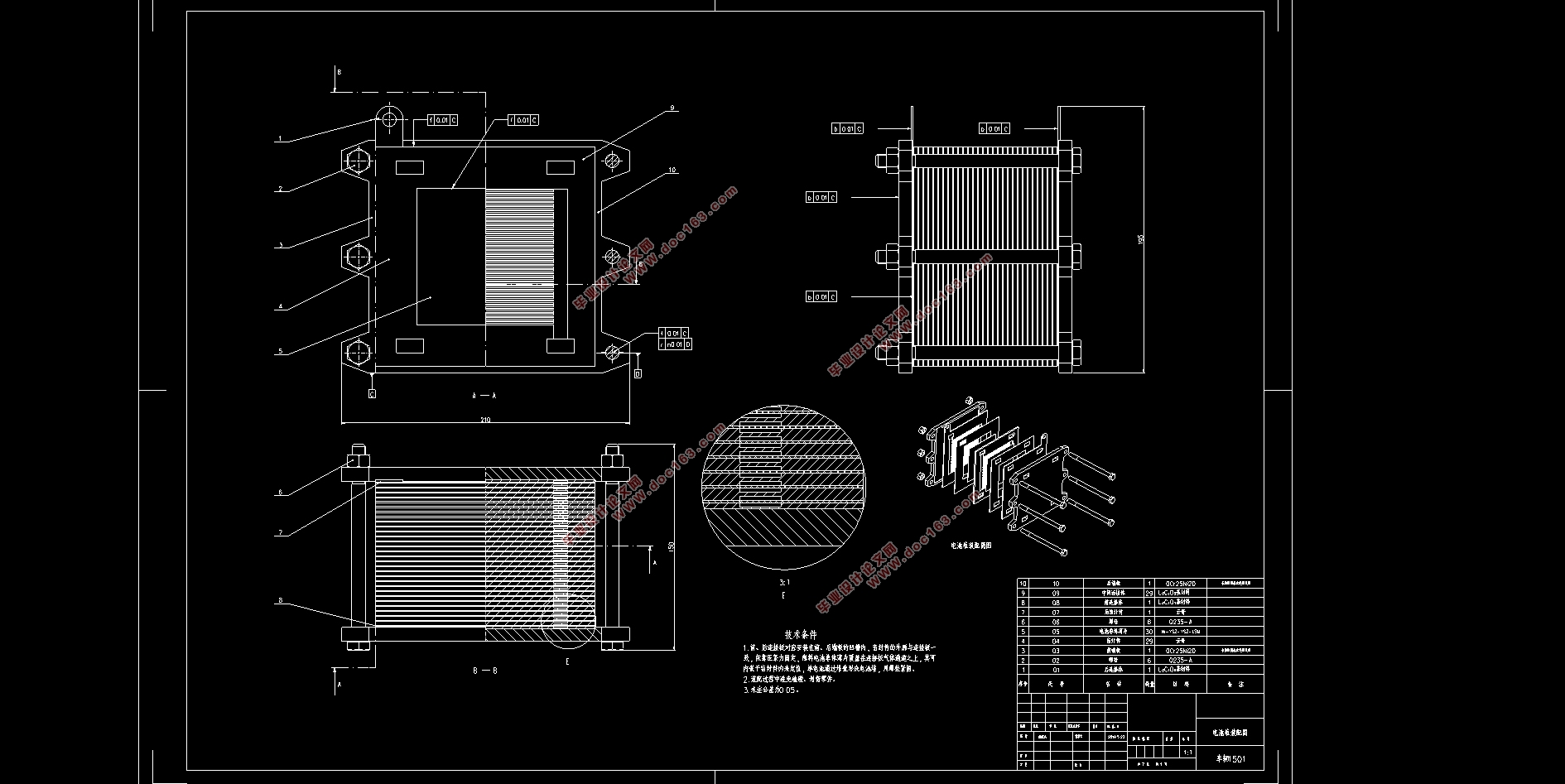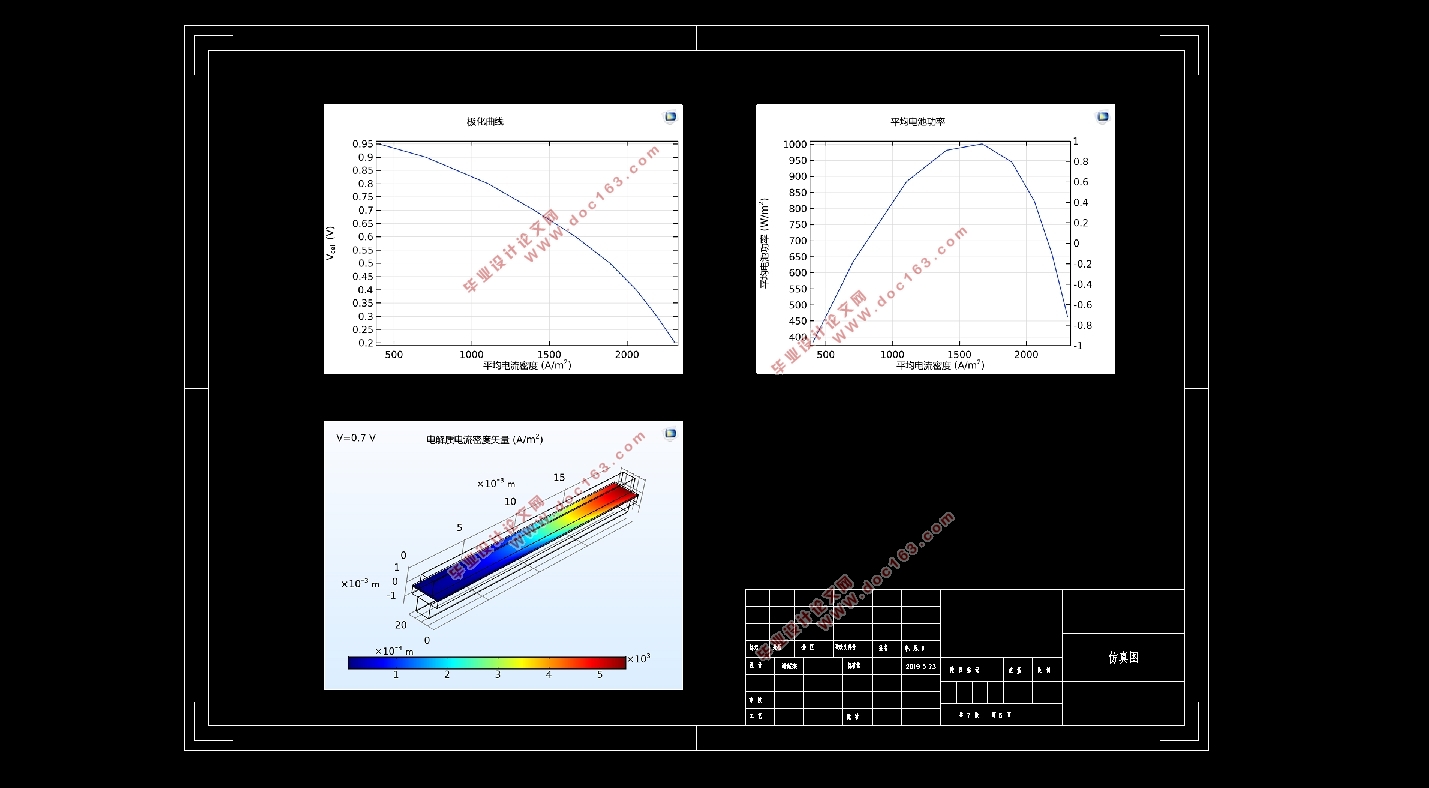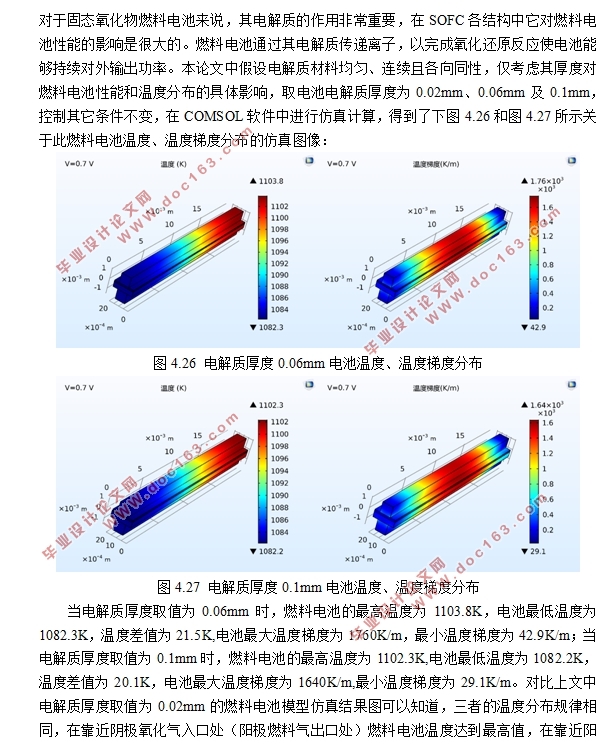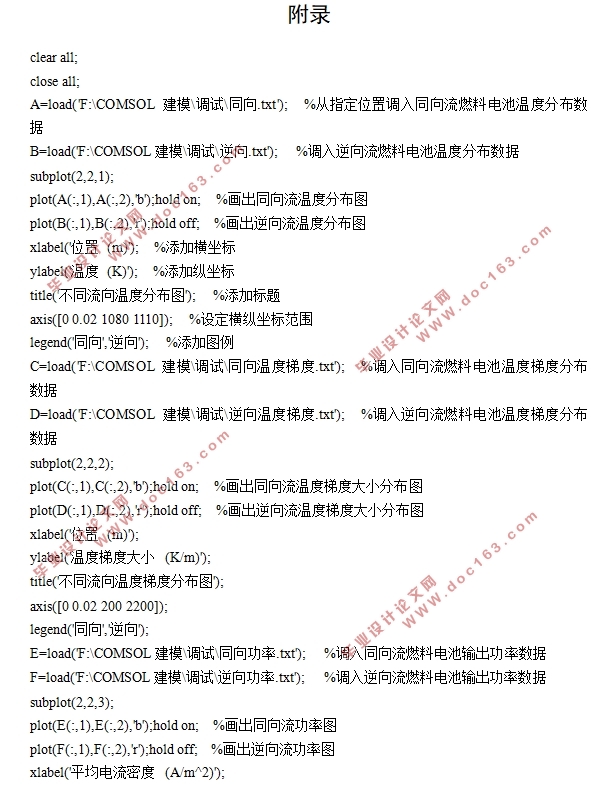用于电动汽车增程器的燃料电池热管理研究(含CAD零件装配图)

1.无需注册登录,支付后按照提示操作即可获取该资料.
2.资料以网页介绍的为准,下载后不会有水印.资料仅供学习参考之用.
密 惠 保
用于电动汽车增程器的燃料电池热管理研究(含CAD零件装配图)(任务书,开题报告,论文说明书32000字,CAD图7张)
摘 要
汽车是人们目前最常用的出行工具,但燃油汽车的大量使用造成了全球能源危机与环境污染等问题,因此新能源汽车迎来了发展机遇。在各种汽车新能源中,燃料电池很有应用前景,其中的固体氧化物燃料电池极具潜力,已经被广泛运用在电动汽车当中。
本文的研究对象——用于电动汽车增程器的固体氧化物燃料电池,属于高温燃料电池,其工作温度相比其它类型的燃料电池高很多,所以该电池的热场分布研究非常重要。论文首先介绍了燃料电池的发展历程、应用现状以及国内外关于燃料电池温度分布的一些前沿研究,之后详细描述其分类、结构和电化学原理,在此基础上利用COMSOL软件建立了平板式固体氧化物燃料电池的单电池模型,通过文献资料设定其各项参数值与初始边界条件。最后仿真分析电池流体通道截面、流体流向、电解质及两电极板厚度、流体流速对燃料电池整体温度分布和输出性能的影响,并得出了结论。
关键词:固体氧化物燃料电池;温度场分布;有限元分析;多物理场耦合
Abstract
Automobiles are one of the most commonly used convenient travel tools. However, the extensive use of traditional fuel vehicles has caused global energy crisis, environmental pollution and other problems. Therefore, new energy vehicles have ushered in development opportunities. Among various new energy sources for automobiles, fuel cells have great application prospects, and solid oxide fuel cells (SOFC), which are third-generation fuel cells, have great potential and have been used in electric vehicles.
Range-extender electric vehicle's range extender can use the solid oxide fuel cell. As it is a high-temperature fuel cell, its operating temperature is much higher than that of other types of fuel cells, so the research on the thermal field distribution of the SOFC is of great importance. This paper first introduces the development of fuel cells, their application status and some cutting-edge research on fuel cell temperature distribution at home and abroad, and then describes its classification, structure and electrochemical principle in detail. Based on this, a single-cell model of flat plate SOFC is established by using COMSOL software. The single-cell model of SOFC is determined by literature data to define its parameter values and initial boundary conditions. Finally, the effects of cell fluid channel cross section, fluid flow direction, electrolyte and two electrode plate thickness, fluid flow rate on the overall temperature distribution and output performance of the fuel cell were simulated and analyzed, and the conclusions were drawn.
Key Words: SOFC; thermal field distribution; finite element analysis; multi-physics coupling





[资料来源:www.THINK58.com]
目录
摘 要 I
Abstract II
第1章绪论 1
1.1课题研究背景及意义 1
1.2国内外的发展现状 2
1.2.1国外发展现状 2
1.2.2国内发展现状 4
1.3研究的基本内容、目标及技术方案 5
第2章固体氧化物燃料电池概述 7
2.1燃料电池介绍 7
2.2固体氧化物燃料电池的分类 9
2.2.1管式固体氧化物燃料电池 9
2.2.2瓦楞式固体氧化物燃料电池 10
2.2.3平板式固体氧化物燃料电池 10
2.3固体氧化物燃料电池各部件的材料 13
2.3.1阳极材料 13
2.3.2电解质材料 13
2.3.3阴极材料 14
2.3.4连接板材料 14
2.4固体氧化物燃料电池基本工作原理 14
2.5能斯特势与吉布斯自由能 15 [资料来源:THINK58.com]
2.6燃料电池的极化 17
2.6.1活化极化 17
2.6.2浓差极化 18
2.6.3欧姆极化 19
2.7本章小结 19
第3章固体氧化物燃料电池模型的建立 20
3.1模型假设 20
3.2电堆几何结构与单电池模型 20
3.3模型网格划分 24
3.4模型各项参数的确定 25
3.5单电池数学模型及方程 26
3.5.1质量传递方程 26
3.5.2组分传递方程 26
3.5.3动量传递方程 27
3.5.4电荷传递方程 28
3.5.5热量传递方程 29
3.6本章小结 30
第4章模型仿真计算与研究分析 31
4.1燃料电池模型的仿真计算结果 31
4.2燃料电池温度分布的综合分析 33
4.2.1流体流向的影响 33
4.2.2气体通道结构的影响 36 [资料来源:http://www.THINK58.com]
4.2.3燃料电池阳极厚度的影响 40
4.2.4燃料电池阴极厚度的影响 42
4.2.5燃料电池电解质厚度的影响 46
4.2.6流体流速的影响 49
4.3本章小结 52
第5章结论与展望 54
参考文献 56
附录 58
致谢 60 [版权所有:http://think58.com]
上一篇:基于锂电池的电动汽车制动能量回收系统开发研究(含CAD零件装配图)
下一篇:纯电动汽车电池箱体结构轻量化设计(含CAD零件装配图)
